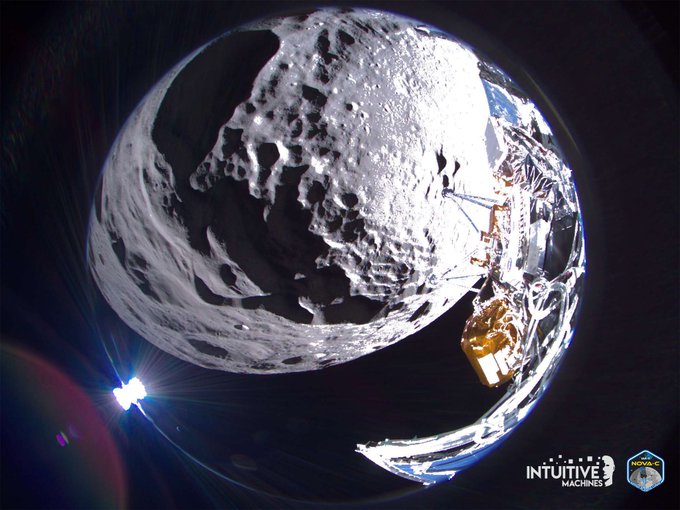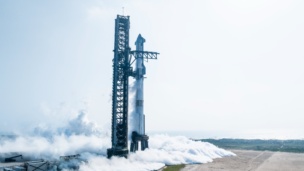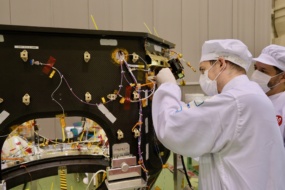Call it a soft-ish landing.
Odysseus, Intuitive Machines’ first lunar lander, is sideways on the Moon, likely propped up on a rock formation within 2–3 km of its intended landing site, according to the latest update from the company late Friday.
How it landed: The vehicle descended at 6 mph, slightly faster than expected, while moving laterally at 2 mph. That, engineers theorize, led the lander to spin as it touched down. Because of the power being generated by the solar panels and reports from other sensors, the company believes it wound up tilted over on its side.

News of the off-kilter lander, following initial reports that it was upright, caused $LUNR’s stock to fall $3 in overnight trading. But sellers may be overreacting: CEO Steve Altemus reports that the payloads on board are still functional. Only one—Jeff Koons’ art cube—is on the panel facing the Moon. More importantly, the technology largely worked, and the company has time to adapt the learnings from this mission to its next lander later this year.
Whoops: Altemus also gave more detail on the last-minute software patch that enabled the lander to use a NASA LiDAR system to guide it toward the lunar surface. The laser rangefinders intended to do the job failed because a physical safety switch was not flipped by technicians when they were installed—the kind of unforced error that keeps aerospace engineers up at night.
But the fates were apparently smiling on the mission when the lander entered lunar orbit with a slightly lower perigee than expected. The flight controllers attempted to fire the laser altimeters, which otherwise wouldn’t have been used until the landing, only to discover that they were inoperable.
Can you hear me now? As of the last update, flight controllers are still working to get a steady radio connection with the lander, which would allow them to download more data, including the much-awaited images. We’re also hoping to obtain imagery from NASA’s Lunar Reconnaissance Orbiter to nail down Odysseus’ location. And the students at Embry-Riddle who flew an ejectable camera payload on the lander still plan to capture an image of the lander on the ground.



